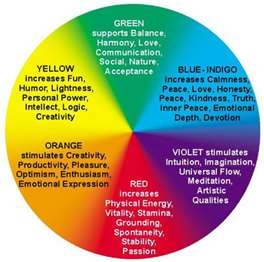Creativity in Teaching for the Improvement of Students
Introduction
Teaching is not about lecturing or giving the lesson and leaving. It is art! It is about studying your students and learning who they really are and what they love. It is about improving the weak students and motivating them to get to the top. It is also about helping them reach to their goal. Many ways can be the reason to make you be their hero. And those ways can be applied with skills and happiness. Learning is not boring as most of the students think! It can be fun and joyful with a touch of imagination. Use the right ways and you will get the best results.

Imagination is the key of creativity
1. Aid of imagination.
Using imagination during the session develops the freedom of knowledge and the flexibility while learning. Here, we will represent some ideas that can be activated during short time only.
1.1: colors:
Using colors during the lesson assists enhancing memory performance [2]. Memory refers to encoding and retrieving information. Studies show that colors are one of the most important visual experiences for the human being. They affect the student’s attention which helps them recover the required information [2]. Colors are used globally in various ways. They are used in computers, films and even on classroom walls. It works as a very important and powerful channel of information to the human’s cognitive system [1]. Each color has a certain role. According to your goal, choose the color you want to use! {Red, yellow and orange are used to grab attention and develop confidence, self-esteem and emotional strength. Blue is used for relaxation and improving communication, intelligence and trust [3]. Green is considered one of the most relaxing colors for the eye. It encourages comfort, environmental awareness and peace [3].}

1.2: Solid Shapes:
Using shapes while teaching helps engage the student’s imagination and ideas. Relating the information taken in the lesson to shapes assists grabbing the learner’s attention and guiding him to the main idea or objective of the study.
- Relate to real life:
A teacher can hold different tools and materials to class related to the given subject. Relate the lesson to reality and make the students explore around them and give examples from their classroom or home, then make the students use the tools such as solid shapes and figures to model their answers. That helps them present the information then retrieve it when needed.
1.3: Charts:
It is not necessary in every class to apply a certain activity, some lessons take more time in lecturing and that will affect the time left for extra prepared exercises. Therefore, the teacher can use a simple way and not need a lot of time. White charts can be given to students to draw or write the main ideas learned from the lesson. That will help them organize the facts and it will help the teacher get the required feedback from her class.
1.4: Related home activities:
Giving a lot of homework does not mean that you are doing your job perfectly or that you are the best teacher. “Too much of anything is bad.” Rather than giving assignments every day, send the students with creative duties. Next day, they will be well prepared for class with a touch of joy!
2. Upgrading productive techniques can change your student’s behavior.
It is not possible to love something but not accept it! Students hear, listen and learn from who and what they love. A first step in every class is to build the right relationship with the learners. It is possible to meet different personalities. But, the trick is to deal with each and every one. Applying most of the possible teaching methods increases the learners’ acceptance for the class and the subject. At that time, you will notice that it is more flexible to collaborate
Conclusion
It is possible that your teaching methods will not suit all the students in the classroom. Misunderstandings are impossible to avoid while teaching a number or a group of students. But, it is known that the teacher completes her job if she leaves the class with at least 70% of the students understood the lesson. What about the 30% left? Do you leave them behind?
Using different strategies while tutoring is necessary, however it helps to catch the student’s attention and engage them during the session. Tutoring does not always mean continuously lecturing. However, applying activities related to the main subject is also required. To make your class perfect, you need to apply different techniques for your students.
References:
1. Mirjana Radovic-Markovic, Lecturer , Dusan Markovic , Creative Education and New Learning as Means of Encouraging Creativity, Original Thinking and Entrepreneurship , Fellow, World Academy of Art and Science.
2. Dr. Oluwakemi Olurinola * Dr. Omoniyi Tayo , Colour in Learning: It’s Effect on the Retention Rate of Graduate Students , Journal of Education and Practice , Vol.6, No.14, 2015.
https://files.eric.ed.gov/fulltext/EJ1080132.pdf
3. Angela Wright, Color Psychology (the “Colour Affects” system).
http://micco.se/wp-content/uploads/2010/05/Micco-Groenholm-on-Color-Affects-System.pdf








